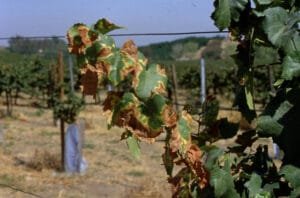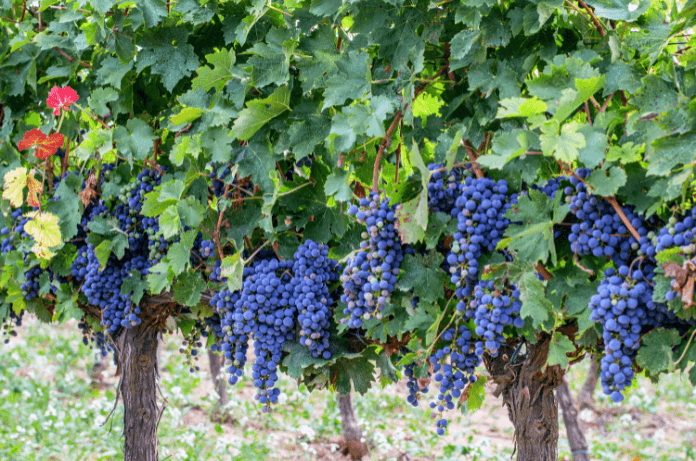A withered grapevine cutting from 1906, long forgotten in a herbarium, has unearthed stunning insights into a plant disease that costs California over $100 million annually. This specimen, collected over a century ago in Modesto, California, holds the DNA of Xylella fastidiosa — the bacterium responsible for Pierce’s disease, a scourge that has plagued vineyards for generations. By analyzing this relic, researchers at UC Berkeley and CIRAD have pieced together the pathogen’s evolutionary timeline, offering new hope for combating its devastating effects.
Origins of Pierce’s Disease
First reported in Anaheim in the 1880s, Pierce’s disease disrupts the xylem, the plant’s lifeline for water and nutrients. Without sustenance, vines wither, their grapes shrivel, and the plants eventually die. Yet, the story of X. fastidiosa begins long before the disease ravaged California’s vineyards. Genomic data now points to its arrival in the United States around 1740, likely carried from Central America. Astonishingly, the disease’s presence in California is linked to at least three separate introductions, reshaping what scientists thought they knew about its origins.
A Serendipitous Discovery
The 1906 cutting was labeled with the term “Anaheim disease,” the original name for Pierce’s disease. Its discovery in the UC Davis Center for Plant Diversity was nothing short of serendipitous. Researchers tested ten historical grapevine specimens but found X. fastidiosa DNA in only one. Extracting genetic material from the degraded sample was painstaking work, yet it revealed critical clues about the bacterium’s mutation rate and how the pathogen evolved in California over the last century.
“This is a significant step toward understanding the complex, pathogen-riddled world around us,” said Alexandra Kahn, co-first author of the study. These findings, published in Current Biology, suggest that even small genetic differences between strains of X. fastidiosa can influence how the pathogen responds to environmental stressors like climate change.
Rethinking History
Historically, scientists assumed that X. fastidiosa arrived in California with grape varieties introduced in the 19th century. Local newspapers of the era, such as the Pacific Rural Press, reported mysterious outbreaks of “Anaheim disease” affecting vineyards. However, the new analysis reveals a far earlier timeline and multiple introductions of the bacterium, which may explain why managing the disease has been so challenging.

“We found that the simplest assumptions about the routes and timing of pathogen introduction may be deceiving,” said Monica Donegan, a UC Berkeley graduate student and co-first author. This revelation has implications far beyond California, as X. fastidiosa continues to spread globally, affecting crops in Europe, Israel, and Taiwan. Understanding its evolutionary history can inform international trade policies and quarantine measures to prevent future outbreaks.
The Hidden Threat of Multiple Introductions
The discovery of three distinct introductions of X. fastidiosa in California underscores the pathogen’s complexity. Much like different variants of SARS-CoV-2, these separate populations of the bacterium may respond differently to environmental changes or disease management strategies. This diversity could make Pierce’s disease even more challenging to contain.
“These biological differences, even if they’re small, can be meaningful when it comes to disease management,” said Rodrigo Almeida, senior author of the study. The existence of genetically distinct strains in California highlights the need for tailored approaches to combat the disease effectively.
The Value of Herbarium Collections
The study also highlights the immense value of herbarium collections. Despite being underfunded and often overlooked, these collections preserve snapshots of the past that can unlock critical scientific discoveries. “You never know how we may benefit from them in the future,” Almeida said. The discovery of X. fastidiosa in a 120-year-old specimen underscores the untapped potential of these archives for understanding plant pathogens.
“A grapevine with a lot of X. fastidiosa is not necessarily a prime candidate for a herbarium collection, so we were very lucky to find even one infected sample,” said Donegan. This fortunate find allowed researchers to calibrate the pathogen’s mutation rate, providing new insights into its evolutionary trajectory.
Way Forward
Today, the fight against Pierce’s disease continues, but with a clearer understanding of its origins and evolution, researchers are better equipped to tackle this agricultural menace. Knowing the bacterium’s mutation rate and historical spread offers valuable tools for predicting future outbreaks and designing targeted interventions.
The story of a forgotten grapevine cutting serves as a powerful reminder that history often holds the key to solving today’s challenges. As plant pathogens continue to threaten global crops, insights like these may help secure the future of agriculture.

